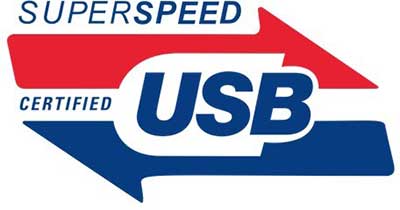SuperSpeed USB 3.0 to rival Thunderbolt speeds in 2014
The newest version of the ubiquitous universal serial bus protocol is primed to get a performance boost in 2014, with data transfer speeds doubling to 10 gigabits per second while maintaining backwards compatibility with the huge existing USB ecosystem.
In an announcement at the Consumer Electronics Show on Monday (via Cnet), the USB 3.0 Promoter Group said consumers will be able to take advantage of the increased speeds in 2014 after the updated specification is completed later this year. Wider availability of SuperSpeed USB 3.0 devices will appear in 2015.
The group, consisting of Hewlett-Packard, Intel, Microsoft, Renesas Electronics, ST-Ericsson, and Texas Instruments, is pushing the new spec as an alternative to the high-speed Thunderbolt interface that hasn't seen widespread adoption beyond Apple's Mac lineup. With the speed bump, USB 3.0 will be encroaching on Thunderbolt's territory with support for external devices that require high-speed data rates like SSDs and secondary monitors.
In addition to the speed bump, the new specification could bring tweaks to power delivery that will allow for faster device charging and may have enough power to run laptop PCs.
Like the Thunderbolt protocol, USB 3.0 users may need to buy all-new cables to take advantage of the higher data rates when products start hitting store shelves next year. While current SuperSpeed cables are not certified to be interoperable with the upgraded 10Gbps controllers, the group said "it is possible" that the interconnects will be compatible.
Computer manufacturers will also have to build in new controller hardware once the protocol is standardized later this year, meaning consumers will need to buy all-new hardware if they want to see boosted speeds.
While currently viewed as a niche product, Thunderbolt does have advantages over SuperSpeed, including dual 10Gbps channels, the ability to daisy-chain devices for faster throughput and long cable runs. Most recently, Corning announced it would be releasing new fiber optic products in 2013 suitable for use as Thunderbolt cables, which can theoretically be used to operate devices some 100 feet away.
Intel is also researching ways to bring faster versions of the Thunderbolt protocol to market, though no timeline for the updates has been announced.
 Mikey Campbell
Mikey Campbell











 Malcolm Owen
Malcolm Owen
 William Gallagher and Mike Wuerthele
William Gallagher and Mike Wuerthele
 Christine McKee
Christine McKee
 William Gallagher
William Gallagher

 Marko Zivkovic
Marko Zivkovic









